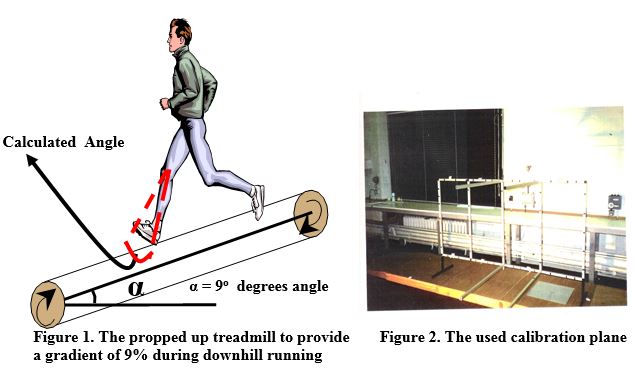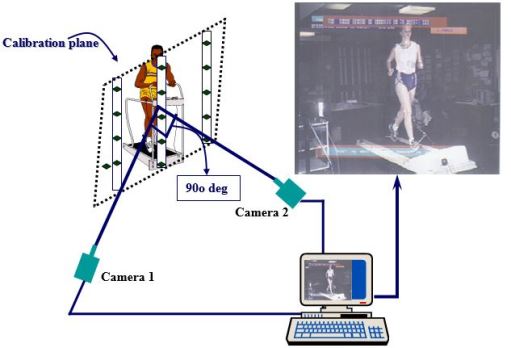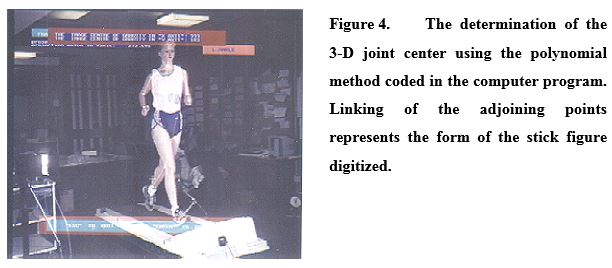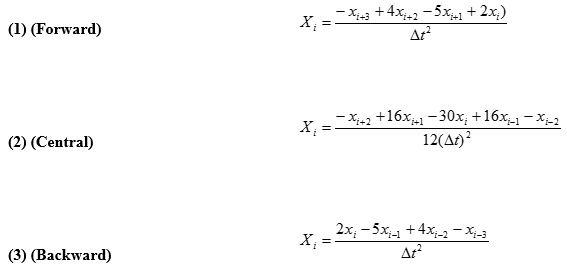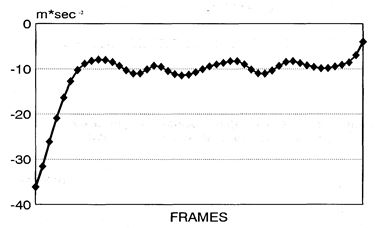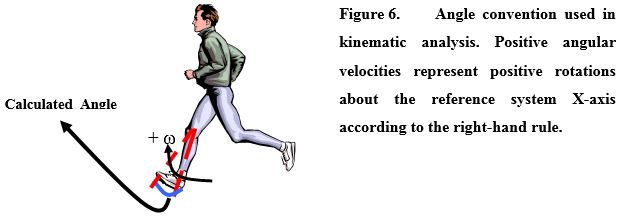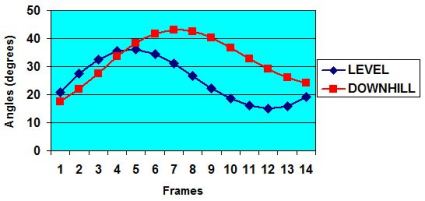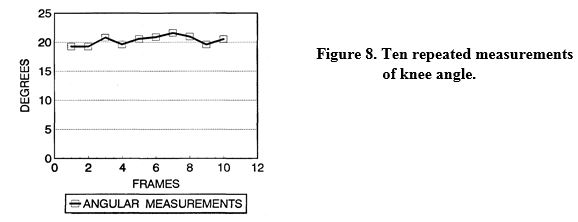Age Requirement in Professional Sport
Introduction
Young athletes should be able to turn pro so that they can make money.
This allows them to take care of themselves and their families. In October
2005, 15 year old golfer Michelle Wie turned pro Young basketball players
who have recently made the direct leap from high school to the NBA include
LeBron James, Dwight Howard, Korleone Young, and DeSagana Diop.. These
athletes were all able to take early advantage of their talents. Their
exceptional abilities enabled them to jump from high school directly to
the professional ranks, and to enjoy monetary gains through which they
could better their lives and the lives of their families.
The NFL age requirement bars young football players from turning pro
right after high school. This NFL rule withstood court challenge in 2004.
The NFL and NCAA claim that the NFL age requirement protects young athletes
by shielding them from physical injury and requiring them to mature emotionally
and receive an education before entering the world of professional sports.
In fact, the NFL and NCAA are capitalizing on young athletes’ entertainment
value and turning a profit for three years, without compensating the “performers”.
The higher courts should not treat the NFL age requirement as a valid
eligibility requirement under U.S. labor law. Rather, they should side
with the lower court, which found that this age requirement violates antitrust
law. The NFL and NCAA are the only game in town for young football players.
As the case of Maurice Clarett demonstrates, a football player who is
shut out of the NCAA and NFL is effectively prevented from pursuing a
career as a professional football player. It would be one thing for the
NFL to establish eligibility requirements that really were in the best
interests of young players and the sport of football. However, the current
age requirement exists solely so that two powerful sports organizations,
the NCAA and the NFL may benefit. . The NFL benefits because they have
used the collegiate ranks as a free farm system to develop future prospects
for the league. During this developmental period for the collegiate athlete,
the NCAA capitalizes on marketing the rising stars potential to make it
big in the NFL. Given these financial interests, it appears that the NCAA
and NFL have set age requirements in order to prevent young athletes from
profiting financially from their talents until they have served as an
unpaid source of marketable entertainment source for the NCAA and NFL.
Age requirements in professional football do not benefit young athletes,
nor do they improve the sport itself. They exist solely so that two powerful
and profitable athletic organizations can turn a profit, at the expense
of the athletes, the very individuals the NCAA was established to protect.
NFL age eligibility requirements should be struck down.
The NFL Eligibility Requirements
NFL rule requires a player to either be out of high school for three
years or have finished three college football seasons before joining the
league. (Lupica, M. 2004) The NFL is the only major professional sport
that prohibits the drafting of players who have not completed three college
seasons or who are not three years removed from high school graduation
(Gehring, 2004; Nieporent 2004). The NFL claims that this rule is in the
athlete’s best interest. The NFL argues that this rule protects player’s
physical safety. However, the NFL and the NCAA benefit by capitalizing
on amateur athletes
The NCAA Eligibility Requirements
The NCAA rule book states that once an individual declares themselves
eligible for draft status, they automatically loss loose amateur status
in the particular sport.
Other Sports Eligibility
Before the National Basketball Association collective bargaining agreement
of 2005, the minimum drafting age for the NBA was 18 years old. The LPGA,
NHL and PGA have a waiver option for athletes who are younger than 18,
which enables athletes an opportunity to turn pro before the age of 18
if they fulfill certain requirements. They have a minimum age requirement
of 18 years. Major League Baseball requires athletes to be 16 years of
age to tryout for farm teams. Tennis has been more lenient about teen
players, although they limit the number of events they can enter. FIFA
and the U.S. National Soccer team do not any have specific age requirements
for their athletes. (USA Today 2003)
Who Should Enforce Age Requirements
Organizations have justified why age requirements are necessary in professional
sports. These young athletes gain enormous notoriety due to media portraying
them as superhuman. When negative incidents occur, the media is there
to cover the athletes’ story. The people operating professional
sports assume one way to avert problems is to have age requirements. In
the past, many talented high school athletes made the jump to professional
ranks for monetary gain. Athletes such as Tara Lipinski, Lebron James,
and Oscar de La Hoya possess physical talents that supersede their social
and emotional maturity. (Toronto Star, 2005) One assumption about these
public figures is that they have been given too much, too young. When
problems arise, such as the Kobe Bryant or Mike Tyson rape cases, one
may question their perception of reality. These talented young athletes
have been forced to rely on the recognition gained from their athletic
talents, which leads them to perceive a false sense of reality. It is
also argued that the rapid jump from high school to the professional level
creates athletes that lack self control and who think they are invincible.
The Kobe Bryant rape case or one of the many Mike Tyson cases and accusations
are only a few examples of a young athlete with enormous star potential
that flailed under these false pretenses. The NFL states that having an
age requirement would help to prevent inappropriate situations for promising
young athletes due to lack of social development and maturity.
The government has set standards for minors to be employed only with
written parental consent under the age of 16. Should guidelines be set
by the government to control eligibility requirements for employment in
professional sports? Legislation has already stepped in to regulate drug
testing for steroids in baseball. Legislative control of drugs in baseball
has occurred because the government felt not enough has been done to regulate
steroid use in professional sports. They state that the problem lies with
the organizations controlling the sport professions. (Guthrie, 2004; Talev,
M. 2005)
The Problems with Age Requirements
The focus continues to benefit the organization. Little benefit has been
seen outside the organization. A few athletically gifted players who do
not have the academic abilities required to play in college have less
chances to play professionally. The age requirement would force young
stud athletes to wait a year or two before being drafted or trying out
for a professional team. Another issue with age requirements is the role
of the unethical agent looking to capitalize on the abandoned year of
an unfortunate athlete looking to capitalize on their talents. (Williams,
2001)
Players not able to Cash in on their Talents
The biggest area of concern for the college athlete is the potential
for a career-ending injury occurring before they are able to cash in on
the monetary value of their talents. The possibility of being hurt while
playing in minor leagues or college is of great concern. The athletes
do not make enough money in the minor leagues, and if they have a career
ending injury they may be unable to support themselves and their family
because they have no other training to fall back on. Also, financial compensation
for their injury may not be made available to them. In a collegiate athlete’s
case, no money is paid to financially sustain themselves or their families.
The NCAA continues to ignore the student athletes, who’se careers
areis cut short by injury, barring them from possible professional monetary
gains. (Huma, 2002; Hayden, 2001)
Literature Review
The Labor Law
The National Labor Relations Act of 1935 is the law that governs interstate
commerce. This includes the labor relationships between professional athletes
and teams (Bohlander, G., & Snell, S.2001; Resnick). Section 7 of
the National Labor Relations Act states: “Employees have the right
to self-organization, to form, join, or assist labor organizations, to
bargain collectively through representatives of their own choosing, and
to engage in concerted activities, for the purpose of collective bargaining
or other mutual aid or protection, and shall also have the right to refrain
from any or all such activities except to the extent that such right may
be affected by an agreement requiring membership in labor organization
as a condition of employment.” (Bohlander, G., & Snell, S. 2001;
Resnick 2005)
Child entertainment laws in many of the states throughout the United
States require that the minimum age for minors to have work permits and
letters of release is 16 years of age. Out of 50 states, only four have
labor laws that specifically state that anyone under the age of 18 needs
a work permit. 31 states have laws that regulate minors working for entertainment
purposes, of those, 24 of these states have required an age limit for
minors to possess work permits.
Government Age Standards for Agriculture Employment
The U.S. government has set guidelines for the minimum age standards
for agriculture employment. Children under the age of 12 may work depending
on the prescribed conditions of the harvest. (Child Labor Requirements
1984) Employment is allowed if they are working at their permanent residence
under parental or guardian approval. “Twelve and thirteen year olds
may be employed with a written consent by the parental consent or a farm
where the minor’s parent or person standing in place of the parent
is also employed.” (Child Labor Requirements 1984) Fourteen year
olds seeking employment may be employed if they work around school hours
and are in no agricultural hazard declared by the Secretary of Labor.
(Child Labor Requirements 1984; Siddiqi, Faraaz; Patrinos, H.A.1997) Sixteen
years of age is the minimum age requirement for agricultural employment.
Sixteen year olds may work around school hours unless employed by their
parent or person standing in as their parent. (Child Labor Requirements
1984) The minor may work in any agricultural hazardous condition declared
by the Secretary of Labor. (Siddiqi, Faraaz; Patrinos, H.A.1997)
Written law by the Secretary of Labor enables minors to perform manual
labor for wages. These laws set guidelines that allow minors to be employed
and perform physical labor for pay. Laws are set according to age for
minors to perform physical labor for pay. Professional sports are just
as physically demanding as manual labor, yet young athletes, unlike young
laborers the same age are not able to capitalize on their work. A talented
15 year old that plays golf well may not play professionally because of
the organizational standards. These same minors are unable to capitalize
on their athletic abilities despite the fact that it is within the confine
of the law. Corporate institutions have the ability to control and direct
minors through stages that allow minors to develop into professional athletes.
For example, the NFL uses the NCAA system to determine who is best qualified
for the professional ranks. The NCAA is the organization that sets rules
and restrictions of what athletes can and cannot do. (Huma, 2002)
Definition of Professional Sports
The difference between amateur and professional athletes is that professional
athletes receive payment for their employment, where amateurs do not.
(Bohlander, G., & Snell, S. 2001) The system of professional sports
is a high performance work system. Athletes are placed in unique performance
systems that hone their skills, which enable them to achieve higher playing
levels. As athletes hone their skill and continue performing at a high
level, the organization builds their business from the success gained
by their sports teams.
The NCAA
The NCAA is a governing body that oversees amateur athletic participation
in its member colleges and universities. Its original purpose was to maintain
educational integrity for athletes and to protect their interests regarding
injuries from sport. Others I have thought it was originally formed to
regulate safety in college football. Several players were being killed
and there was a movement to ban the sports. Theodore Roosevelt, having
had football players on his team of “Rough Riders” during
the Spanish-American War, wanted to save the game so he called for formation
of the NCAA. (Hawes, K. (1999) Student athletes generate billions of dollars
for the universities and the NCAA year after year. Yet these same athletes
are left without the financial gains accumulated by the universities and
the NCAA. Athletes that participate in division I university athletics
are compensated with an athletic scholarship. The problem is that athletic
scholarships do not cover the full cost of going to school, thus leaving
the student athletes looking for employment while participating in sports
and going to school fulltime (Huma, 2002) Scholarship athletes are only
allowed to make limited amounts of money while participating in collegiate
sports.
The NCAA reaffirms the universities contention that collegiate athletes
remain as amateur athletes. Both the NCAA and the universities maintain
the stance that student athletes are not employees of the universities
or the NCAA. The NCAA and the universities contend that an education is
something that is invaluable; therefore, they are receiving worthy compensation
for participation in athletics. The NCAA argues that scholarships provide
athletes with a “free education” which is an invaluable payment
for their services. While no one can deny the value of an education, this
frees the NCAA and universities from paying a wage or salary (Sage 1998)
The athletic scholarship is a work contract that claims the rights of
ownership of the athletes for the university. The school (coach) owns
the athletes. (Sage 1998) Universities and the NCAA contend that they
conduct their business separately from student athletes, despite the working
relationships contracted between the student athletes and the universities.
Universities claim their business is to provide an academic education
to the students. The business of athletics is not essential to their purpose
of providing an education. (Huma, 2002; Hayden 2001) Within the past 15
years, the NCAA business decisions stray from their original purpose to
benefit student athletes. Former NCAA executive director Walter Byers
states that intercollegiate athletics is similar to the values of modern
corporations or professional sports than the basic values of amateurism.
(Sage, G.H.1998)
The NCAA original concept was to protect student athletes from injuries
stemming from football and other sports (Huma, 2002) The NCAA created
coaching clinics that informed coaches how to protect the athletes. Currently,
the NCAA does not have safety guidelines for practices to be correctly
administered to prevent injuries or death. (Huma, 2002; Hayden 2001) The
other problem is that NCAA does not provide workers compensation for athletes
who are injured while participating in athletics for universities. Coaches
have designated practices that are termed voluntary, but it is known that
lack of participation will result in the sacrifice of the student-athlete.(Huma,
2002) The NCAA continues to abandon athletes who are injured in so called
‘voluntary’ practices. (Huma, 2002; Hayden 2001) In order
for a student-athlete to qualify for workers’ compensation, they must
meet two requirements: (1) the student-athlete must be covered and (2)
the student-athlete must have been acting within the scope of his/her
employment when he/she was injured or killed. (Huma, 2002; Hayden, C.
2001) Courts have been at odds dealing with the employer/employee relationships
between the universities and student athletes. Courts have received criticism
for not taking a definitive stand regarding the employer/employee relationship
between the university and the student athletes. Previous court decisions
relating to monetary compensations for athletes whom have sustained career
ending injuries have not dealt with this problem. (Hayden 2001) If an
athlete were fatally injured, the NCAA does compensate the athlete’s
family with a $10,000 award. Courts refused to define the role of the
student athlete and their financial importance to the universities and
the NCAA. Universities and the NCAA continue to exploit collegiate athletes
for their financial benefit. Huma states that collegiate athletes only
receive a partial ‘full scholarship’, with the inability to
earn money from other employment, and no work compensation if severely
or fatally injured. This puts the athletes at great risk. Some of these
talented athletes risk a chance of generating millions of dollars for
themselves.
Unfair Labor Practices
U.S. Congress has defined 5 unfair labor practices, three of which solely
relate to professional sports.
- The first unfair labor practice stated is interfering with, restraining,
or coercing employees in the exercise of their rights guaranteed. One
example of this is the voluntary practices made mandatory by restricting
and threatening of the athletes’ position loss. - The second example is dominating or interfering with the formation
or administrating of any labor organization, or contributing financial
or other support to it. NCAA does not solely support the athletes participating
in collegiate athletics. The NCAA has restrictions that prohibit athletes
to work to support themselves and their families that would better their
situation. (Huma, 2002) - The third example deals with discriminating in regard to hiring or
tenure of employment or any term or condition of employment so as to
encourage or discourage membership in any labor organization. The NBA
setting a minimum age requirement within the collective bargaining agreement
that basically prohibits young athletes from making the jump from high
school to the professional arena.
The Ideal Professional Organization
Nieporent states that the National Football League recognizes their position
as a ‘profession.’ Therefore they have the ability to establish
the minimum age requirements for participation in the profession. The
NFL is one single business entity, creating one product: its season (Nieporent
2004). A pro sports league is a single business entity with multiple divisions.
The NFL is a league with a business entity of 32 divisions. All 32 divisions
have a shared interest in keeping product quality high. Because they have
a vested interest in the NFL, teams equally share television revenues,
their main source of income (Nieporent 2004). The NFL’s ruling on
the athletes being three years removed from high school is in the best
interests of the NFL, not the player. The NFL season is filled with quality
players through collegiate football. The NFL has induced their standard
of development through the collegiate system. Compared to all the other
professional sports, the NFL is the superior organization because of its
capability to externalize the source (collegiate athletes) to best benefit
their product (season) for the good of their organization.
In Summary
In 1925, Red Grange left college early to capitalize on his talents by
accepting a $50,000 salary offered by the Chicago Bears. Because Red Grange
left college early, the profit margin for the university and the NCAA
were negatively impacted. The NFL responded by establishing a professional
eligibility rule that prohibits athletes leaving college early. This rule
originally prohibited athletes from entering the NFL draft for four years,
but in 1990, this rule changed to three years (McCormick, Robert A., McKinnon,
and Matthew C.1984). This rule benefits the NFL by forcing athletes to
spend more time developing their skills to become more complete players.
The NCAA followed the NFL age requirement rule by stating that once an
athlete declares himself eligible for professional sport, he is no longer
eligible to participate in collegiate sports.
Maurice Clarett made headlines two years ago when he declared himself
eligible for the NFL draft. His declaration challenged the NFL rule that
stated an athlete had to be three years removed from graduating high school
to become eligible for the draft. Clarett only participated in one year
of collegiate football. This bylaw prohibits Maurice Clarett from capitalizing
on his talents in professional sport. The NCAA reaffirms NFL guidelines
in their bylaws by enforcing their rule that states once a player declares
himself eligible for the NFL draft, he may no longer play collegiate football.
Therefore, by Clarett declaring himself eligible for the NFL draft, he
became ineligible by both organizations. Maurice Clarett, NCAA, lawyers,
and the NFL viewed his talent as a huge commodity. Clarett’s desire
was to capitalize on his talents as soon as possible. Clarett filed and
won the suit based on the NFL being in violation of antitrust laws. The
Clarett attorneys argued that when Maurice Clarett wanted out of college
football, “the current rule perpetuated a ‘system’ whereby
college football serves as an efficient and free farm system for the NFL
by preventing potential players from selling their services to the NFL”(Gehring,
2004). The courts ruled in favor of Clarett stating that the “rule
must be sacked” due to violations of antitrust laws (Gehring, 2004).
The argument also raised questions about unfair labor laws. The first
unfair labor practice stated is interfering with, restraining, or coercing
employees in the exercise of their rights guaranteed.
The Court of Appeals reversed the lower courts’ decision, forcing
Clarett to sit out of football and preventing him from enhancing his skills
and talents. The NFL stated that the rule was part of the league’s collective
bargaining agreement with the players’ union. Section 7 of the unfair
labor practice exemplify refusal to bargain collectively with the duly
chosen representative of employees. Therefore, if this individual is to
be let into the league, then he would have to comply with the rules of
the collective bargaining agreement. To the NFL, this statement meant
that Maurice Clarett must accept and comply with the rules agreed upon
in the previous collective bargaining agreement. The reason for the age
requirement rule in the NFL bylaws is to allow athletes time to develop
and mature physically to take on the daily rigors of being a professional
football player. They did not want to have immature players drafted into
the league who might become a liability, athletically or personally.
This year, after sitting out two years from college football, he became
eligible for the NFL draft. Once he was free from both the NCAA and NFL,
he was unable to perform to expected levels of professional football,
which led to his release from the Denver Broncos.
Clarett’s case demonstrates the problem with athletes taking it
upon themselves to capitalize on their talents through professional sport.
The NCAA and the NFL have manipulated the football market in a manner
that prevents talented young athletes from entering the NFL. The NFL is
the only major professional sport to prohibit the drafting of players
who have not completed three college seasons or who are not three years
removed from high school graduation. (Gehring, 2004; Nieporent 2004) The
NFL claims that this rule is in the athlete’s best interest. However,
it was clearly not in the best interest of Maurice Clarett, who was forced
to sit out for two years after dominating the collegiate ranks. Clarett’s
objective was to capitalize on his intangibles on his terms, not those
of the NFL or NCAA. These two dominant institutions use their powerful
influence to manipulate their infrastructure in ways that best benefit
their organizations. Courts continue to ignore the fact that these athletes
are being exploited. They refuse to establish the working relationship
between the collegiate athlete and the university. Athletes continue to
produce high quality entertainment that universities and the NCAA capitalize
on without compensating the entertainers. Institutionalized needs are
based on the hegemonic order of the consumer society. (Worth and Kuhling,
2004). This is the reason the NFL has set itself up to be the ideal professional
system from an organizational standpoint. They have benefited most from
players being developed at the collegiate level.
The Trend Towards Age requirements in Professional Sport
Other professional sports organizations are beginning to adopt age requirements
for athletes. The movement towards age requirements in professional sports
is seen in the NBA. Recently, the National Basketball Association and
the NBA Players Association concluded their collective bargaining agreement.
One important issue dealt with the minimum age required to be eligible
to play in the NBA. The agreement requires that players entering the league
must be a minimum of 19 years to play professional basketball. This is
a one year increase in age to be eligible for NBA draft. One argument
for this change in eligibility is that the increase of high school athletes
entering the NBA draft need time to develop and mature while aiming for
a professional career. The argument against the agreement states that
the NBA is in search of building a relationship of a free developmental
farm system for professional basketball, similar to the relationship the
NFL and the NCAA..This would become a developmental system for the young
athletes to hone their skill and mature into professional athletes. (Brewer
2004). David Stern, commissioner of the NBA, understands that teenagers
are a part of the NBA. (Brewer 2004). Upward of 10 high school players
may enter the NBA Draft this summer. (Brewer 2004). Various opponents
view the NBA farm system as a financial gain for David Stern and a blow
to the economically deprived individuals who view sport as a way to improve
themselves. (Price, 2005) The NBA is vying for the most direct and secure
path to the NBA to best benefit the NBA.
Opportunities for the Young Professional
Opportunities for professional athletes at such a young age have been
possible with great success. Social stratification shown throughout the
world by globalization encourages people from underdeveloped countries
to aim for the American dream. One dominant mainstream American dream
is playing professional sports.
These candidates may have bright futures as NBA All-Stars. (Brewer 2004).
“The NBA is better at developing talent, teenage talent or any other
kind, than the colleges”. (Brewer 2004). Foreign leagues such as
NFL Europe, Euro league Basketball, and NBA Europe are becoming an alternative
route for athletes to get to the pros. Some athletes, who might not have
the academic capabilities to succeed in college but have the talent to
play professionally, are seeking these other alternatives as ways to collect
on their talents. These new leagues are slowly developing into talent
pools for professional teams to recruit new athletes for their specific
need. It makes good business sense for professional organizations to seek
out players who are more mature and have honed their skill. Teams may
pick up a player inexpensively in these world leagues that fulfills a
specific job on the team for a season. The organization does not have
to take the time to develop an individual or spend the necessary money
to ‘build the future.’
Conclusion
No One Argues the Benefits of Going to College
Players get the experience of growing as an amateur athlete being in
college. College expands education and enhances both social and public
relations skills, even if the athlete is in college for only a year or
two. Time spent in college will mature the athlete, enabling them to be
more prepared when they enter the NBA and even more importantly, when
their NBA careers are over. Knowledge gained from their collegiate experience
is important in the development of a teen becoming a responsible young
adult. The social and educational development may only be experienced
while in college. The athletic development is an area that is going to
develop regardless of the institution or coaching. However, when the collegiate
athlete has the opportunity to play in the NBA, the collegiate athlete
is older and more mature. The time spent in college allows athletes to
develop into a more complete player. The NBA as well as the NFL has used
the college ranks as the minor leagues for development of their players.
The athletes will learn and understand their position as an amateur athlete
while attending college. The professional league views that mature, established
veterans would have a more prosperous and robust career.
Sage states that big time Division One athletics goal is about capital
accumulation. Universities promote images of healthy, admirable, amateur
athletes, in the non-profit setting, but the underlying intentions of
universities is to organize athletics based strictly on marketing principals.
(Sage, 1998). Universities are non-profit organizations, which enable
them to continue to put monies gained back into athletic departments,
which in turn produce larger more attractive venues to produce a better
product. The dominant powerful influence will only increase with more
time because these institutions continue to grow. An age requirement in
professional sports enables these institutions to maintain a high level
of entertainment. Age requirements are good for collegiate sports. Sport
programs claim educational benefits between sport and the university because
of the money generated from contracts with advertisers, sponsorships,
and sporting apparel. Collegiate sports is big time business, therefore,
the trend to enforce age requirements in professional sports will continue
to be enforced. Sports are big business.
References
Brewer, Kevin (2004). Stern ready to agree on a minor concession. The
Washington Times
Bohlander, G., & Snell, S. (2001). Managing human resources. (13th
Ed.) South-Western
Child Labor Requirements in Agriculture under the Fair Labor Standards
Act (Child Labor Bulletin No. 102) (1984). U.S. Department of Labor Employment
Standards Administration Wage and Hour Division. WH Publication 1295 www.dol.gov/esa
Farrell, Perry A. (2005) Free press sports: NBA, players reach a deal;
Lockout avoided; minimum age for players rose to 19. June 22. Detroit
Free Press
Jasner, Phil (2005). Dawkins has no regrets in going pro after high school.
Philadelphia Daily News, Philadelphia Daily News, the (PA), Jun 06, 2005
Killion, Ann (2005). NBA makes a deal _ are you listening, NHL? San Jose
Mercury News (CA), Jun 21, 2005
Garrett, Leonard; McBrearty, Joe (2003) Lakeland, Tenn. (c) USA TODAY,
2003
Gehring, John (2004) Education Week, American Education’s Newspaper of
Record. Editorial Projects in Education, v. 23, 23, p 3.
Guthrie, Julian (2004) Congress Demands Action on Steroids Lawmakers
take a hard line with players and officials; Senator John McCain: They
Can’t Be Trusted
Congress may need to set baseball’s drug-test rules. San Francisco Chronicle
Hawes, K. (1999) History of the NCAA: The NCAA century series. The NCAA
News.
Lupica, M. (2004, February, 6) Judge’s flag is overdue. New York Daily
News
McCormick, Robert A., McKinnon, Matthew C.(1984) Professional Football’s
Draft Eligibility Rule: The Labor Exemption and the Antitrust Laws, 33
Emory L. J. 375, 377 & n. 12 (tracing the origin of the Rule to 1925).
National Collegiate Athletic Association (2005) Legislation and Governance
http://www2.ncaa.org/legislation_and_governance/
N.A (2003). NBA age requirement wouldn’t hurt teen athletes USA Today
Academic Search Premier SFX Sports President and CEO Arn Tellem’s recent
commentary in USA TODAY
Nieporent, David (2004, February 9) Easterhuh? Jumping to conclusions.
http://oobleck.com/tollbooth/archives/2004_02.html
Price, Dwain (2005) NBA needs a true minor league system, not a minimum
age requirement Fort Worth Star Telegram
Resnick, Bernard. (2005) Labor relations in professional sport. Published
Writings
Sage, G.H. (1998) Power and ideology in American sport. Human Kinetics
(2)
Siddiqi, Faraaz; Patrinos, Harry Anthony (1997) Child labor: issues,
causes and interventions.
Talev, Margaret (2005) Baseball under a Shadow; Steroid hearings send
sport a message: Clean up your act. Washington Bureau of the Sacramento
Bee
Planet, Too good, too young. (2005, March). Toronto Star (Canada), pg.15
Williams, Armstrong (2001) Basketball’s new breed. Tribune Media Services
townhall.com

